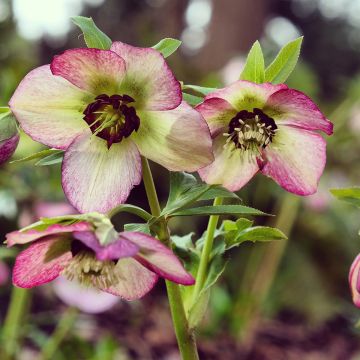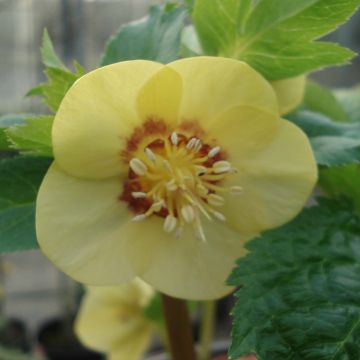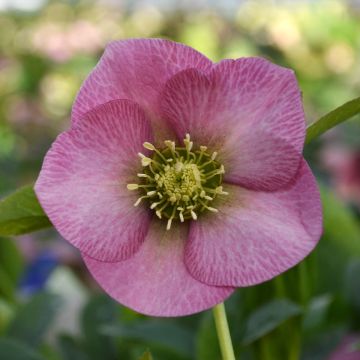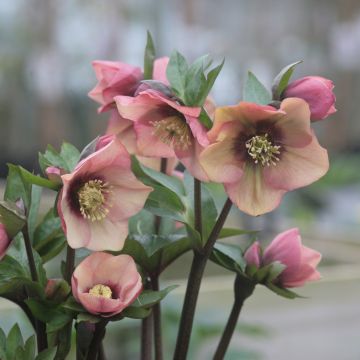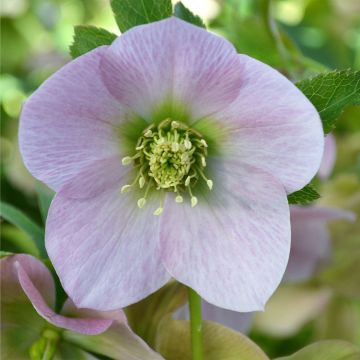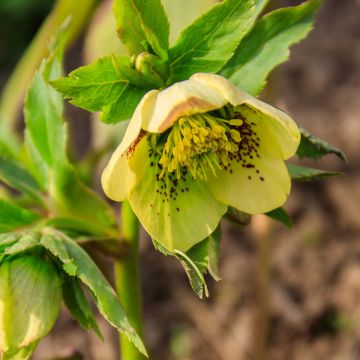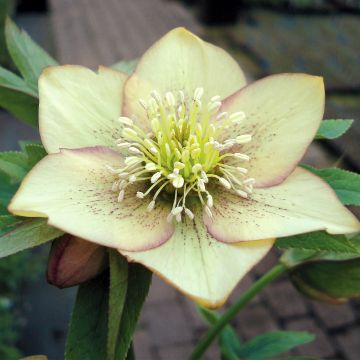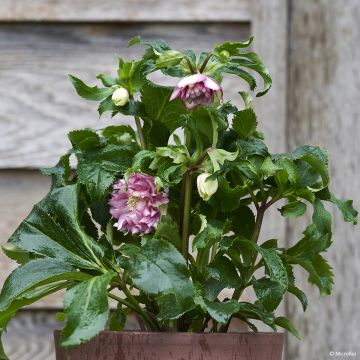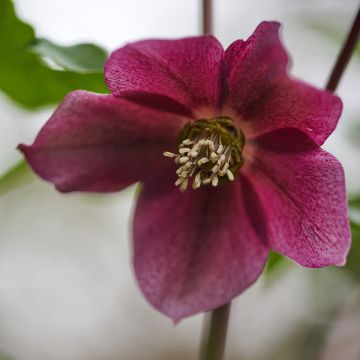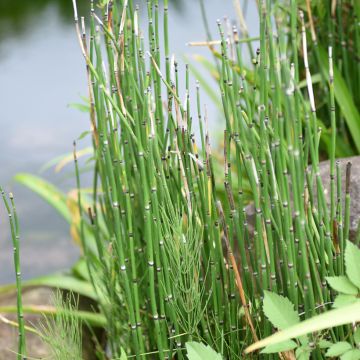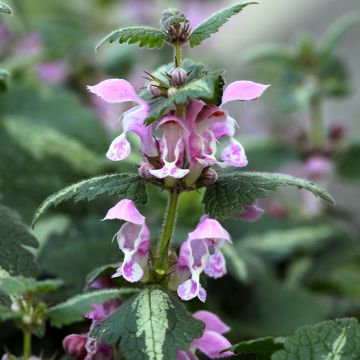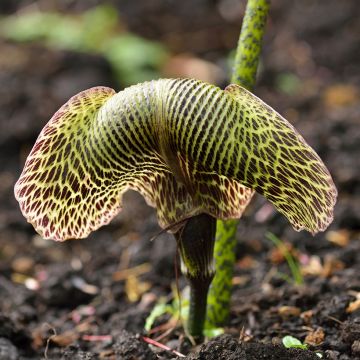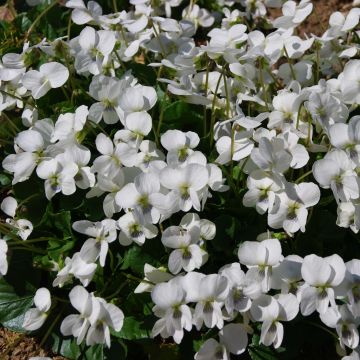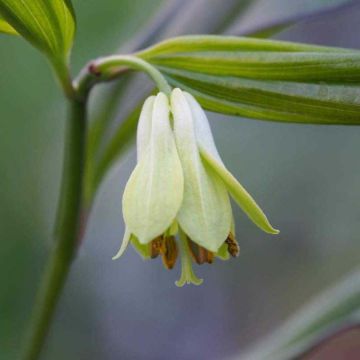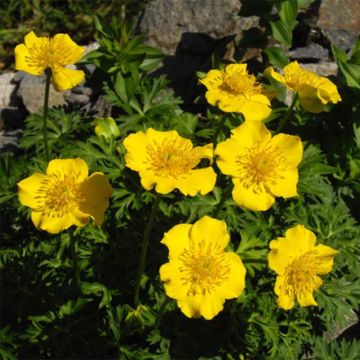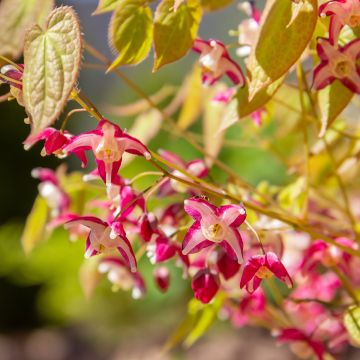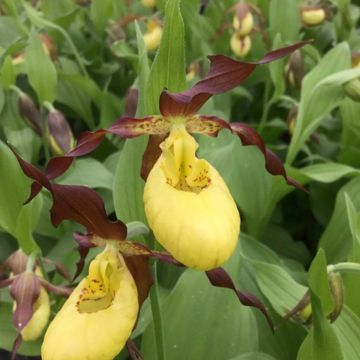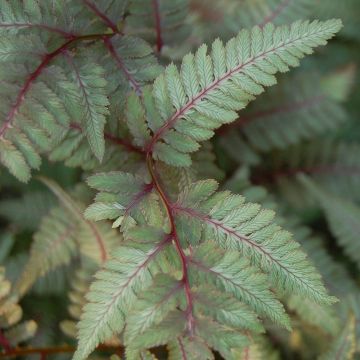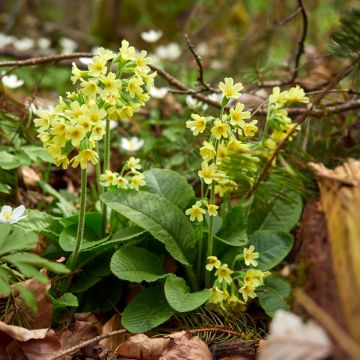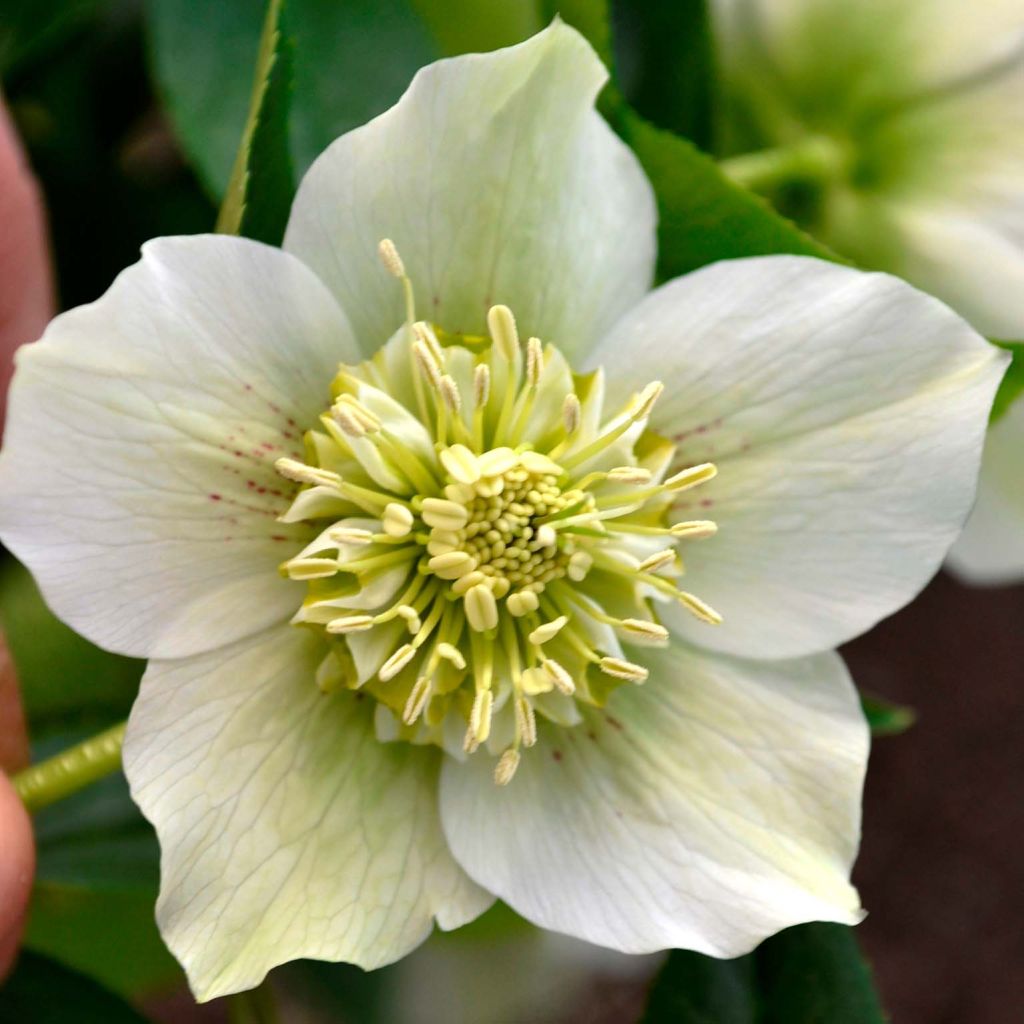

Helleborus hybridus Anemone White
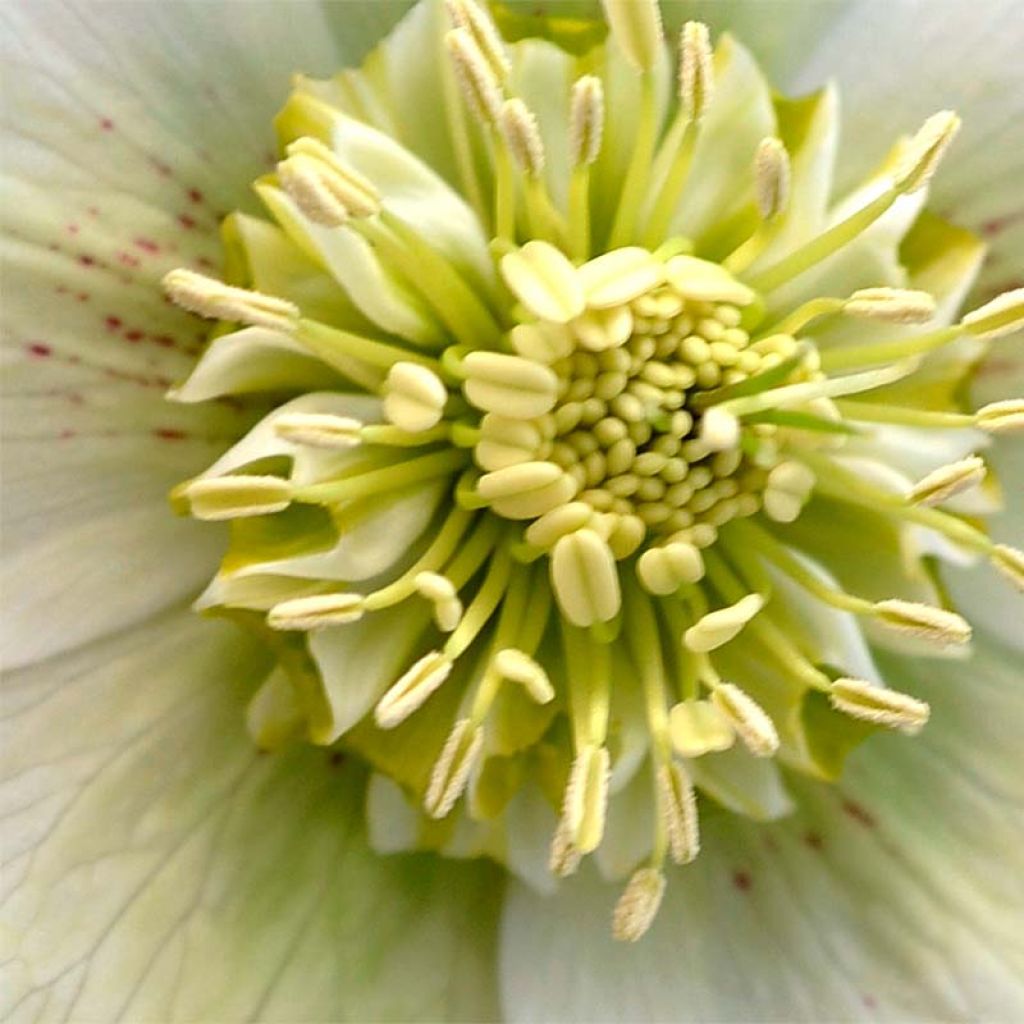

Helleborus hybridus Anemone White
Helleborus hybridus Anemone White
Helleborus x hybridus Anemone White
Lenten Rose, Oriental Hellebore
Mixed review: the plant is vigorous, it grew well in spring, but... the flowers are pink, speckled with green, whereas I had ordered pure white!
Catherine, 15/05/2024
This item cannot be shipped to the selected country
Delivery charge from €5.90
More information
Schedule delivery date,
and select date in basket
This plant carries a 12 months recovery warranty
More information
We guarantee the quality of our plants for a full growing cycle, and will replace at our expense any plant that fails to recover under normal climatic and planting conditions.
From €5.90 for pickup delivery and €6.90 for home delivery
Express home delivery from €8.90.
Does this plant fit my garden?
Set up your Plantfit profile →
Description
Oriental Hellebore Anemone White illuminates shady areas in the heart of winter and has a place in a white garden, romantic or classic in inspiration. This variety produces charming flowers with a pretty cream-white collar, earning them the name of anemone flowers. This robust and very hardy perennial can be grown in borders, under shrubs and in pots. Easy to grow, even in heavy soil, it will thrive in shade or non-scorching sun.
Native to Greece, Turkey, and central and eastern Caucasus, the Oriental Helleborus, sometimes called Lenten Rose, is a perennial plant of the buttercup family that hybridizes very easily with other species to produce many hybrids with varied colours and shapes, to the point where no variety names are given to these hybrids, they are distinguished by their shape and colour characteristics. The Oriental Hellebore is a hardy plant that can tolerate temperatures as low as -15°C (5°F), naturally growing in forests, thickets, and clearings up to 2,000 m (6,600 ft) altitude. White Anemone forms a compact and leafy clump 40 cm (16in) in all directions. It consists of palmate, slightly toothed, dark green and shiny, evergreen basal leaves, 30 to 40 cm (12 to 16in) long, composed of 7 to 9 leaflets. They live for 8 months and are regularly replaced by new leaves.
Between February and April, a bouquet of simple, cup-shaped and inclined flowers, 4 to 5 cm (2in) in diameter, forms, with a collar of petals characteristic of this group of hybrids, placed on a corolla of petals. They are inclined downwards, letting water slide off like an umbrella to protect the heart of the flower from rotting. The Hellebore is a bushy plant that does not like to be moved once established, young plants take a while to flower. The seeds are sown by ants.
Use hellebores as elements of an ancient tapestry, mixing them with woodland plants in brighter colours. They are highlighted when planted near Pieris, small-sized rhododendrons, under conifers (especially in windy sites), and surrounded by primroses, wood anemones, corydalis, dicentras, cardamines, or spring-flowering bulbs and snowdrops. You can also accompany them with ferns and shade irises to create a beautiful contrast a little later in the season. They can be planted in groups, like a bouquet, near the entrance of the house, in shady locations to enjoy their early flowering up close. They are suitable for cut flowers and in borders, edges, or even containers... Over time, Hellebore flowers do not wither like the majority of other flowers, but dry out instead.
Each seed-sown hellebore is unique in flower colour: slight variations in colour may exist between two plants, which is normal and inevitable. However, if the difference is too significant and detracts from the desired effect, we will refund or replace the affected plant.
Report an error about the product description
Helleborus hybridus Anemone White in pictures
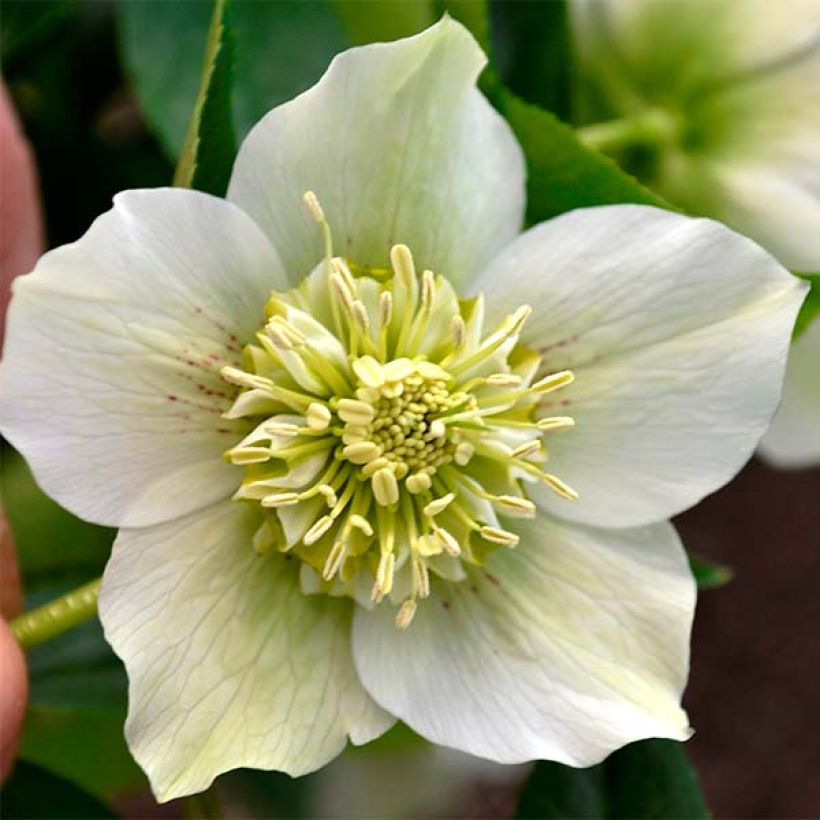

Flowering
Foliage
Plant habit
Botanical data
Helleborus
x hybridus
Anemone White
Ranunculaceae
Lenten Rose, Oriental Hellebore
Cultivar or hybrid
Other Oriental Hellebore
Planting and care
Oriental Hellebore grows in any acidic, rich, light or clay soil, in partial or light shade, sheltered from cold and dominant winds. Avoid direct sunlight during the hottest hours. This perennial should be planted from early autumn to spring, between February and April. It thrives in deeply worked soil mixed with organic matter. To feed, use bone meal or another organic fertilizer. Water the plants well after planting and then add a layer of mulch 2 to 5 cm (1 to 2in) thick. Regularly remove faded leaves to improve flowering. Maintain a planting distance of 30 to 40 cm (12 to 16in) between each plant to promote their development. Hellebores do not tolerate stagnant water as it may cause them to rot.
The roots should not dry out completely in summer. Hellebores can be affected by a fungal disease transmitted by aphids called black spot. Remove the old leaves from deciduous species or the spotted leaves from evergreen species when the flower buds appear. Remove faded flowers after seeding. They can also suffer from grey rot or die from collar rot. This often occurs due to poor growing conditions in excessively wet situations.
On a balcony or terrace, plant them in pots 4 to 5 times larger than their size, as they need space to develop their root system. Most hellebores can withstand freezing temperatures down to -15°C (5°F) without suffering, allowing them to adapt to almost all regions.
Planting period
Intended location
Care
-
, onOrder confirmed
Reply from on Promesse de fleurs
Shade-loving perennials
Haven't found what you were looking for?
Hardiness is the lowest winter temperature a plant can endure without suffering serious damage or even dying. However, hardiness is affected by location (a sheltered area, such as a patio), protection (winter cover) and soil type (hardiness is improved by well-drained soil).

Photo Sharing Terms & Conditions
In order to encourage gardeners to interact and share their experiences, Promesse de fleurs offers various media enabling content to be uploaded onto its Site - in particular via the ‘Photo sharing’ module.
The User agrees to refrain from:
- Posting any content that is illegal, prejudicial, insulting, racist, inciteful to hatred, revisionist, contrary to public decency, that infringes on privacy or on the privacy rights of third parties, in particular the publicity rights of persons and goods, intellectual property rights, or the right to privacy.
- Submitting content on behalf of a third party;
- Impersonate the identity of a third party and/or publish any personal information about a third party;
In general, the User undertakes to refrain from any unethical behaviour.
All Content (in particular text, comments, files, images, photos, videos, creative works, etc.), which may be subject to property or intellectual property rights, image or other private rights, shall remain the property of the User, subject to the limited rights granted by the terms of the licence granted by Promesse de fleurs as stated below. Users are at liberty to publish or not to publish such Content on the Site, notably via the ‘Photo Sharing’ facility, and accept that this Content shall be made public and freely accessible, notably on the Internet.
Users further acknowledge, undertake to have ,and guarantee that they hold all necessary rights and permissions to publish such material on the Site, in particular with regard to the legislation in force pertaining to any privacy, property, intellectual property, image, or contractual rights, or rights of any other nature. By publishing such Content on the Site, Users acknowledge accepting full liability as publishers of the Content within the meaning of the law, and grant Promesse de fleurs, free of charge, an inclusive, worldwide licence for the said Content for the entire duration of its publication, including all reproduction, representation, up/downloading, displaying, performing, transmission, and storage rights.
Users also grant permission for their name to be linked to the Content and accept that this link may not always be made available.
By engaging in posting material, Users consent to their Content becoming automatically accessible on the Internet, in particular on other sites and/or blogs and/or web pages of the Promesse de fleurs site, including in particular social pages and the Promesse de fleurs catalogue.
Users may secure the removal of entrusted content free of charge by issuing a simple request via our contact form.
The flowering period indicated on our website applies to countries and regions located in USDA zone 8 (France, the United Kingdom, Ireland, the Netherlands, etc.)
It will vary according to where you live:
- In zones 9 to 10 (Italy, Spain, Greece, etc.), flowering will occur about 2 to 4 weeks earlier.
- In zones 6 to 7 (Germany, Poland, Slovenia, and lower mountainous regions), flowering will be delayed by 2 to 3 weeks.
- In zone 5 (Central Europe, Scandinavia), blooming will be delayed by 3 to 5 weeks.
In temperate climates, pruning of spring-flowering shrubs (forsythia, spireas, etc.) should be done just after flowering.
Pruning of summer-flowering shrubs (Indian Lilac, Perovskia, etc.) can be done in winter or spring.
In cold regions as well as with frost-sensitive plants, avoid pruning too early when severe frosts may still occur.
The planting period indicated on our website applies to countries and regions located in USDA zone 8 (France, United Kingdom, Ireland, Netherlands).
It will vary according to where you live:
- In Mediterranean zones (Marseille, Madrid, Milan, etc.), autumn and winter are the best planting periods.
- In continental zones (Strasbourg, Munich, Vienna, etc.), delay planting by 2 to 3 weeks in spring and bring it forward by 2 to 4 weeks in autumn.
- In mountainous regions (the Alps, Pyrenees, Carpathians, etc.), it is best to plant in late spring (May-June) or late summer (August-September).
The harvesting period indicated on our website applies to countries and regions in USDA zone 8 (France, England, Ireland, the Netherlands).
In colder areas (Scandinavia, Poland, Austria...) fruit and vegetable harvests are likely to be delayed by 3-4 weeks.
In warmer areas (Italy, Spain, Greece, etc.), harvesting will probably take place earlier, depending on weather conditions.
The sowing periods indicated on our website apply to countries and regions within USDA Zone 8 (France, UK, Ireland, Netherlands).
In colder areas (Scandinavia, Poland, Austria...), delay any outdoor sowing by 3-4 weeks, or sow under glass.
In warmer climes (Italy, Spain, Greece, etc.), bring outdoor sowing forward by a few weeks.

































